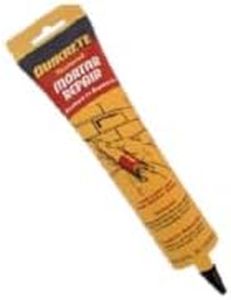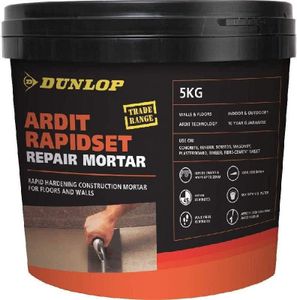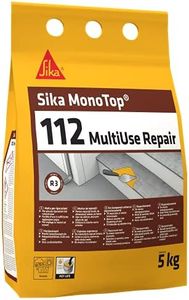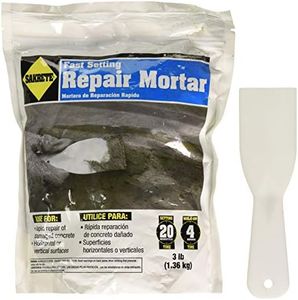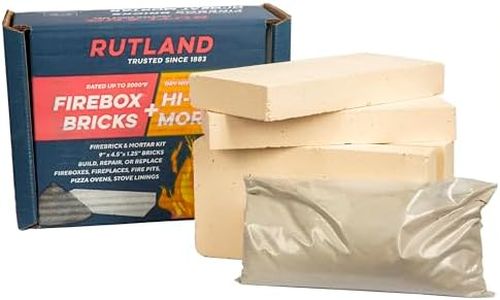We Use CookiesWe use cookies to enhance the security, performance,
functionality and for analytical and promotional activities. By continuing to browse this site you
are agreeing to our privacy policy
10 Best Mortar For Brick Repair
From leading brands and best sellers available on the web.Buying Guide for the Best Mortar For Brick Repair
Choosing the right mortar for brick repair is especially important because the mortar not only holds bricks together but also affects the durability, strength, and appearance of your repair job. When picking a mortar, you should consider the type of brick, the location of the repair, and how much flexibility or strength is needed. Using a mortar that is not well matched to your project can cause cracks or damage the bricks, so taking a bit of time to understand what matters can ensure a lasting and attractive result.Mortar TypeMortar type refers to the blend and strength of the mortar, and is often designated by letters like N, S, M, or O. These types have different properties, especially regarding strength and flexibility. For example, Type N is a general-purpose mortar good for many repair tasks, while Type S is stronger and suited for below-grade walls or exterior applications. Type O is weaker but more flexible, which is useful for older or softer bricks. The right type is guided by how much strength versus flexibility your bricks and location need. Matching the original mortar as closely as possible is usually the safest bet, especially for historic or older buildings.
ColorMortar color impacts the finished look of your repair. Standard mortar is usually gray or off-white, but tinted mortars are available to better match existing work. The right color ensures the repair blends with surrounding bricks, making it less noticeable. To choose, compare a small sample with your existing mortar in different lighting. Sometimes, the mortar will dry lighter or darker than it looks when first mixed, so doing a small test patch in a hidden area can help.
Sand Grain SizeSand grain size affects how the mortar feels and looks, as well as how easily you can apply it. Finer sand produces smoother mortar joints, while coarser sand gives a rougher appearance. Matching the grain size to the surrounding mortar helps blend the repair seamlessly. If you have very old or historic brickwork, using a matching grain size is even more important for both appearance and maintaining the original structure’s characteristics.
Setting TimeSetting time refers to how quickly the mortar hardens after it is mixed and applied. Some mortars set quickly, while others take longer. Quick-setting mortars are handy if you need to finish a repair promptly or if the repair is in a spot that can’t be disturbed for long. Standard mortars with longer setting times offer more flexibility to work and shape the joints. Think about your project size and how experienced you are when choosing—shorter times require you to work faster.
Water ResistanceWater resistance determines how well the mortar prevents water from seeping through the wall. For exterior repairs or for areas exposed to rain, choosing a mortar with good water resistance is crucial to prevent further damage to both the mortar and bricks. If your repair is on an interior wall, this is less critical, but for anything outside or in damp environments, prioritize this feature.
Compatibility with Existing MaterialsCompatibility means how well the new mortar works with the existing bricks and mortar. If the new mortar is much harder or more flexible than the existing one, it can cause the bricks to crack or the joints to fail. To get the best match, try to find out what type was originally used and match the strength and ingredients as closely as possible. For historic repair, consider specialized blends or consult a professional for an accurate match.
